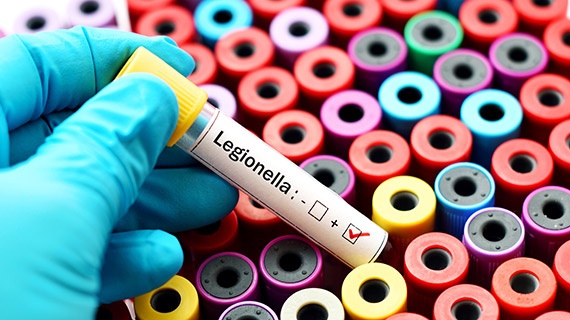What is legionella?
Legionella is the bacteria responsible for causing dangerous respiratory infections, such as the very serious Legionnaires’ disease. While legionella is harmless in small numbers, it can rapidly multiply out of control in man-made water systems if the right safety measures aren’t in place, such as undertaking a legionella risk assessment. Whilst the bacteria cannot pass from one person to another, small water droplets containing the bacteria can easily be inhaled into the lungs, leading to infection.
What is a duty holder?
Anyone in control of a premise, i.e. an employer or landlord that uses a man-made water system is automatically considered the statutory duty holder. The responsibility of controlling and preventing legionella falls to the duty holder and under general health and safety law they are required to prevent and control the bacteria.
What is a responsible person?
If the duty holder does not feel capable enough to control legionella, they can appoint a ‘competent person’ on their behalf. This can be one or more workers within their organisation, or someone external such as a water treatment specialist.
It is important that the duty holder considers the following when appointing a competent or responsible person:
- Does the responsible person have an in-depth understanding of legionella bacteria, how it grows and its risk factors?
- Have they previously carried out legionella risk assessments and control measures to evaluate and prevent legionella?
- Are they aware of the necessary safety practices, guidelines and regulations that they must adhere to?
What are their legal obligations?
It is the duty holder and responsible person’s obligation to oversee and regulate the risk of legionella. More specifically, they must:
- Find and measure any sources of legionella risk by carrying out a legionella risk assessment
- Manage these risks through specific control measures
- Continuously monitor the system to manage risks as part of an ongoing maintenance plan
- Maintain records where there are five or more employees

1. The risk assessment
Relevant legal regulations: Health and Safety at Work Act, (sections 2, 3 and 4)
In order to establish the level of legionella risk present within a water system, a risk assessment must be carried out. This will involve drawing on relevant knowledge of the system to identify where people may be exposed to or vulnerable to legionella. It is the duty holder’s responsibility to make sure that:
- The risk assessment is carried out
- That the assessment is sufficient enough to evaluate legionella risks to residents and employees before they begin their stay or their employment
- The assessment factors in risks to others that are not under the duty holder’s employment
- That there is a regular review of the assessment
2. Managing risks through control measures
Relevant legal regulations: Health and Safety at Work Act, (sections 2, 3 and 4)
The results of the legionella risk assessment may reveal that additional control measures need to be put in place. For example, it may be necessary to inject the system with a disinfectant if the presence of legionella bacteria is high. If the duty holder has not done so already, they can appoint a competent person to carry such control measures out. The duty holder or responsible person must:
- Prevent and adequately control legionella exposure
- Take steps to ensure that the control measures are properly applied
- Review, maintain, test and (if necessary) revise control measures and keep records of this
- Have arrangements in place for managing health and safety and provide others in the building with access to advice
3. Maintaining records
Relevant legal regulations: Health and Safety at Work Act, (sections 2, 3 and 4)
Record keeping is a requirement where a duty holder has five or more employees within their organisation. These should contain:
- Significant findings and results following a legionella risk assessment
- Any steps and control measures taken to control legionella risk
- Monitoring and inspection results along with dates
For further information on legionella compliance and liabilities for responsible persons, including facilities manager companies, download our easy-to-read guide, ‘Legionella compliance and liabilities for FM companies’.







